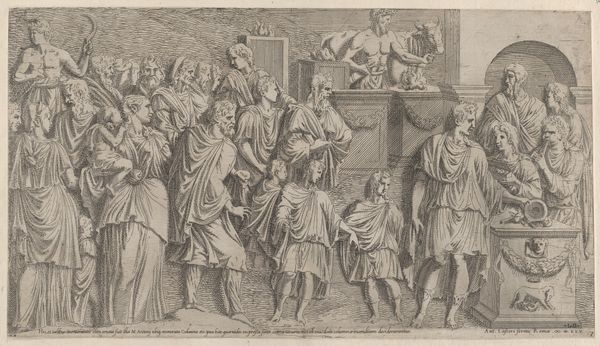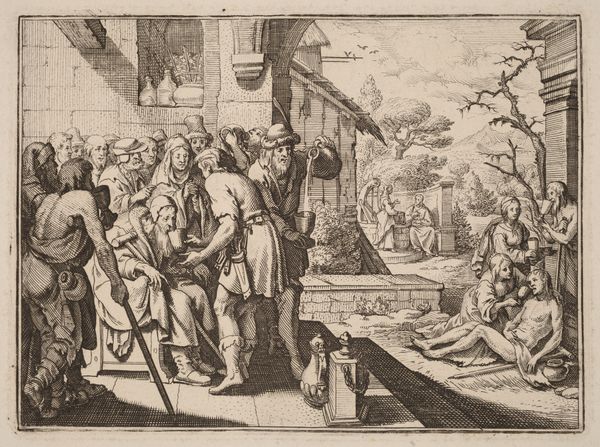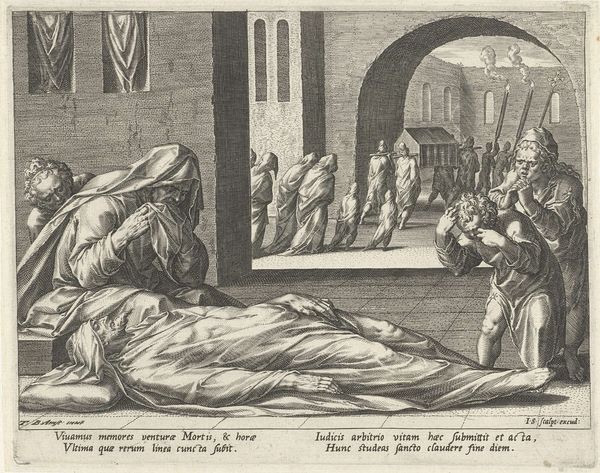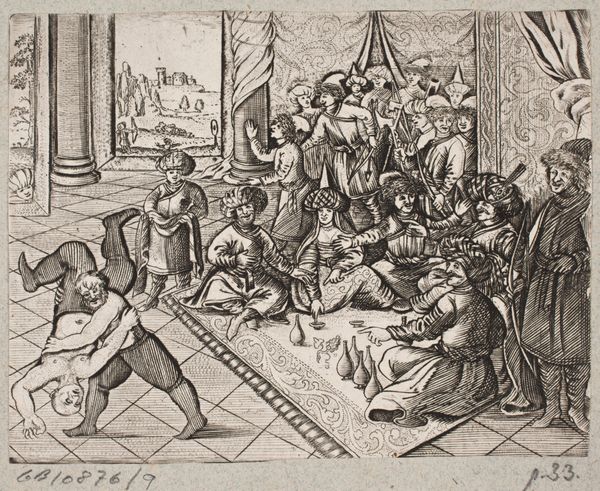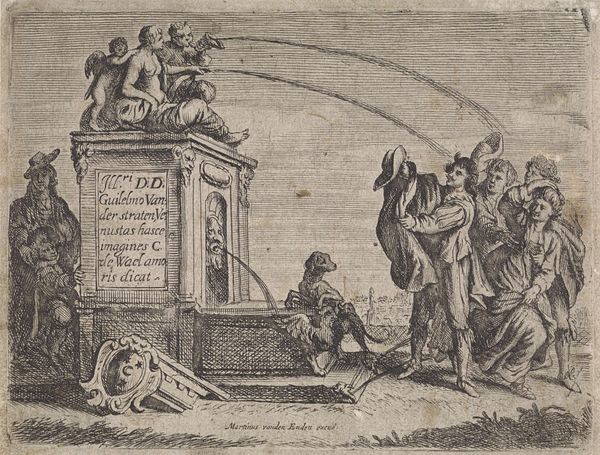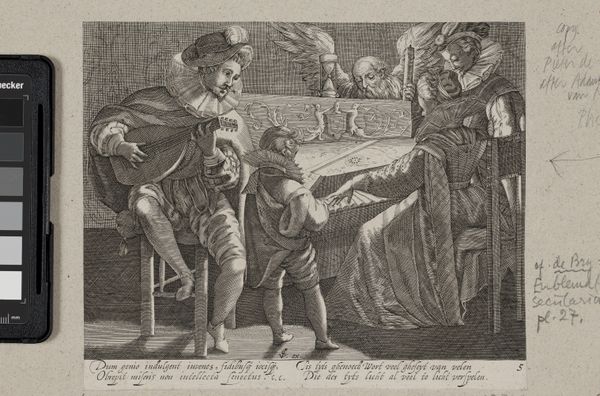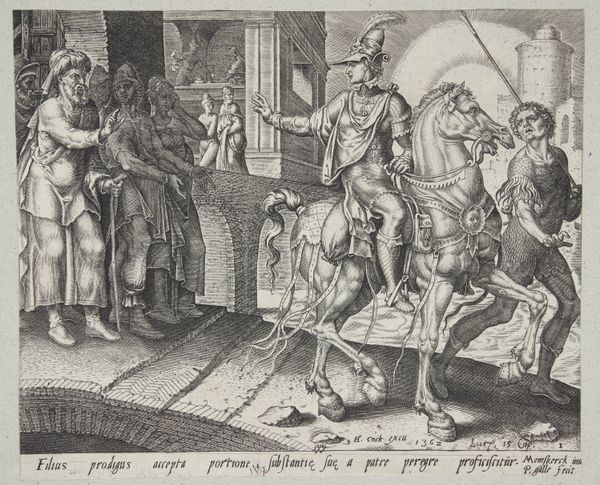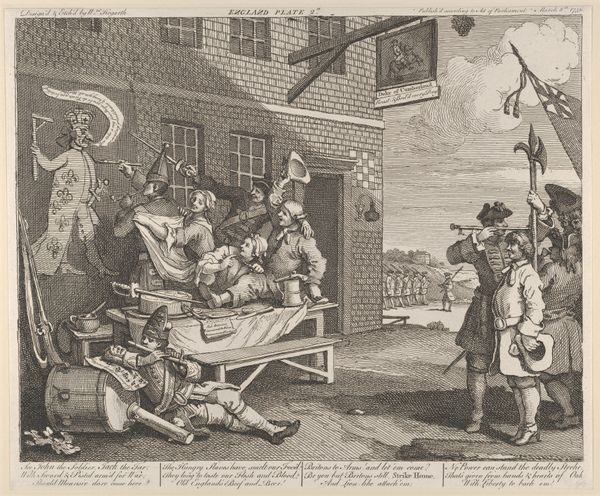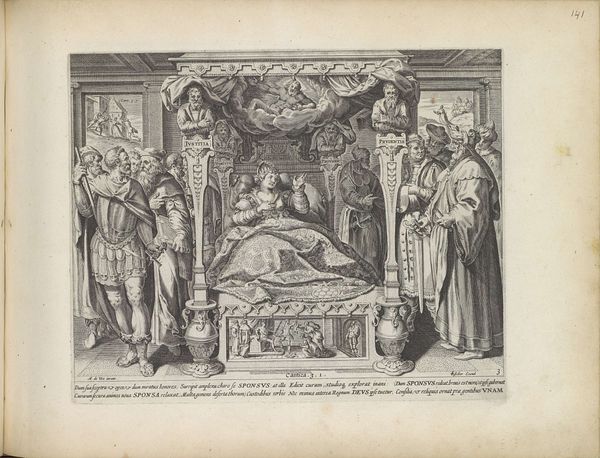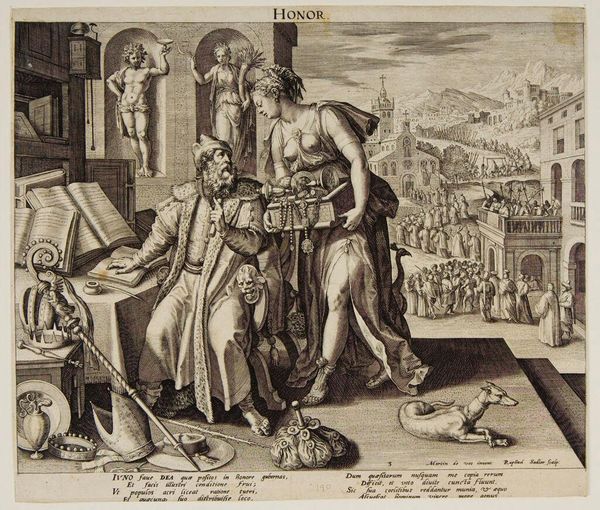![Illustration til Adam Olearius, “Persianischer Rosenthal von einem Sinnreichen Poeten Schich Saadi […]”, Schleswig 1660 by J. Muller](/_next/image?url=https%3A%2F%2Fd2w8kbdekdi1gv.cloudfront.net%2FeyJidWNrZXQiOiAiYXJ0ZXJhLWltYWdlcy1idWNrZXQiLCAia2V5IjogImFydHdvcmtzLzRjMzk5NThlLTIzNTgtNDU5Ny04YjlhLWQzZTBiMmU1ZGNhMy80YzM5OTU4ZS0yMzU4LTQ1OTctOGI5YS1kM2UwYjJlNWRjYTNfZnVsbC5qcGciLCAiZWRpdHMiOiB7InJlc2l6ZSI6IHsid2lkdGgiOiAxOTIwLCAiaGVpZ2h0IjogMTkyMCwgImZpdCI6ICJpbnNpZGUifX19&w=3840&q=75)
Illustration til Adam Olearius, “Persianischer Rosenthal von einem Sinnreichen Poeten Schich Saadi […]”, Schleswig 1660 1660
0:00
0:00
print, engraving
#
narrative-art
#
baroque
# print
#
history-painting
#
engraving
Dimensions: 103 mm (height) x 135 mm (width) (bladmaal)
Editor: Here we have a 1660 engraving by J. Muller, titled "Illustration til Adam Olearius, Persianischer Rosenthal von einem Sinnreichen Poeten Schich Saadi." It depicts a regal scene, seemingly from a story. I am immediately struck by how busy the composition is; everyone seems to be in a conversation or in action. What's your interpretation of the scene? Curator: It's an intriguing visual document. Given its placement in Olearius's "Persianischer Rosenthal," it served a specific purpose in disseminating knowledge about Persia within a European context. What socio-political influences might have prompted such a publication, do you think? Editor: Perhaps the desire to understand and potentially establish trade or diplomatic relationships with Persia in the 17th century? Curator: Precisely. The image then becomes a tool. Consider the figures depicted. Notice how the artist depicts the king, his courtiers and servants. This image constructs and reinforces European perceptions of Persian society. Are they accurate, do you suppose, or strategically stylized? Editor: I imagine there's some level of idealization or perhaps misinterpretation, especially if the artist didn't have firsthand experience of Persian court life. The clothing, for instance – are those European interpretations of Persian garments? Curator: Indeed, costume, architecture – these details tell us more about the intended *European* audience and its expectations. It becomes an act of translation, doesn’t it? A form of cultural exchange, but one laden with power dynamics and potential biases. Editor: So, it's less about an accurate representation of Persia and more about European understanding, or misunderstanding, of it. That reframes how I see the artwork completely. Curator: Exactly! By analyzing the artwork within its historical and cultural context, we see how images like these functioned within the larger framework of early modern European expansion and its complex engagement with other cultures. Editor: Thank you for clarifying; now I appreciate it not only for its art, but for its intricate social story.
Comments
No comments
Be the first to comment and join the conversation on the ultimate creative platform.



